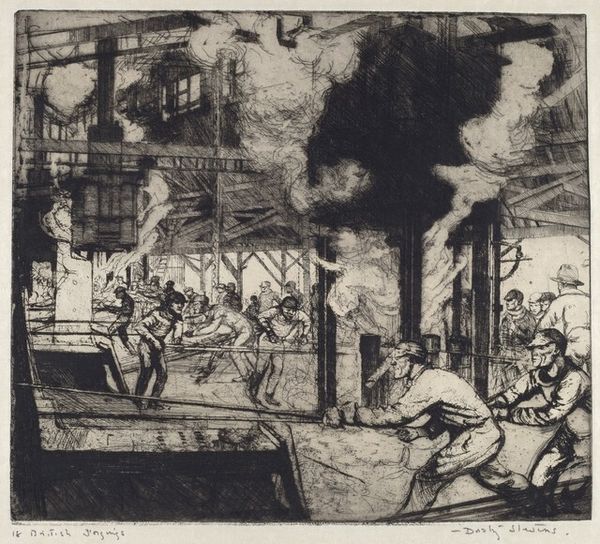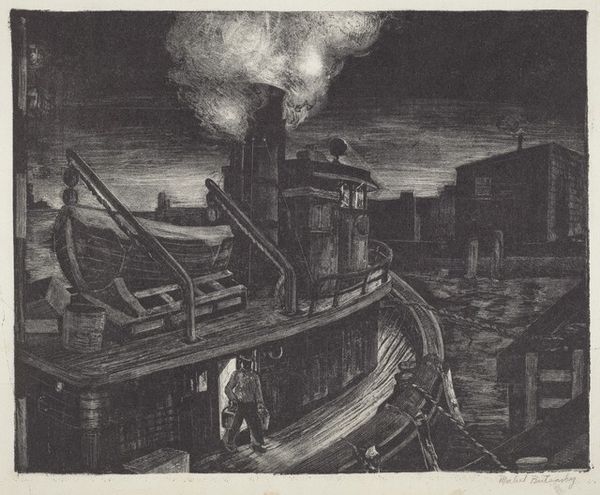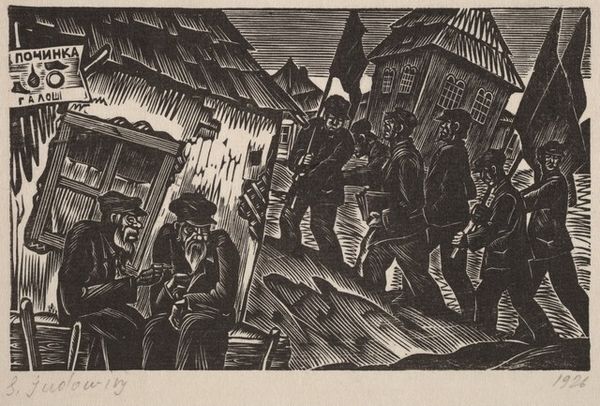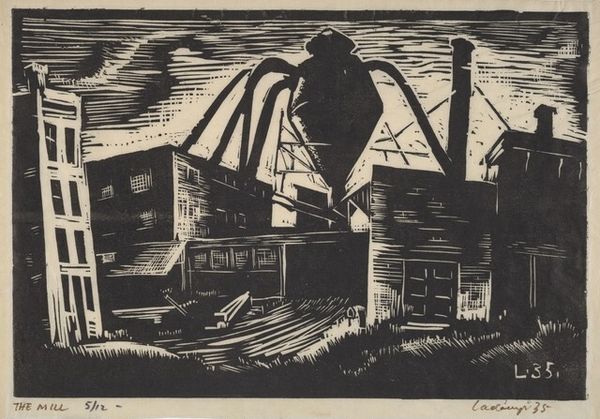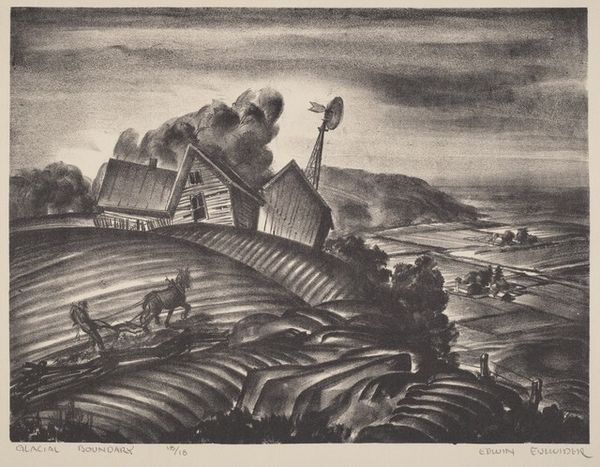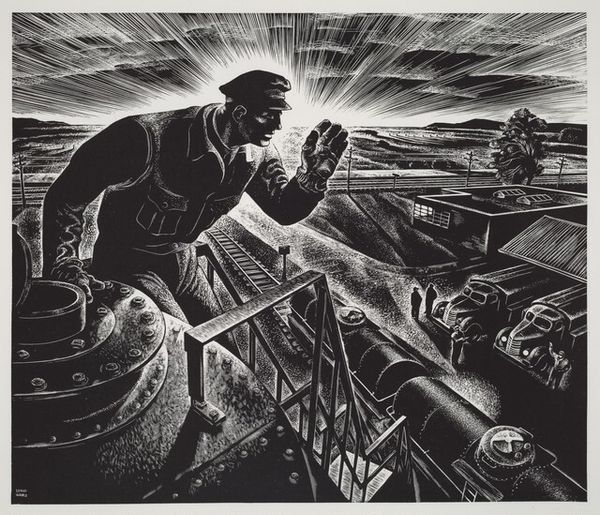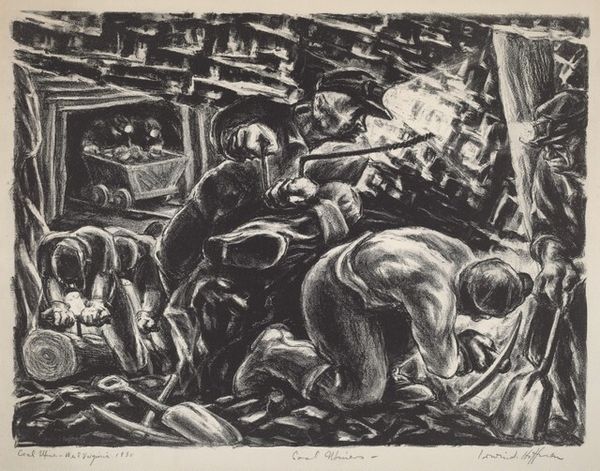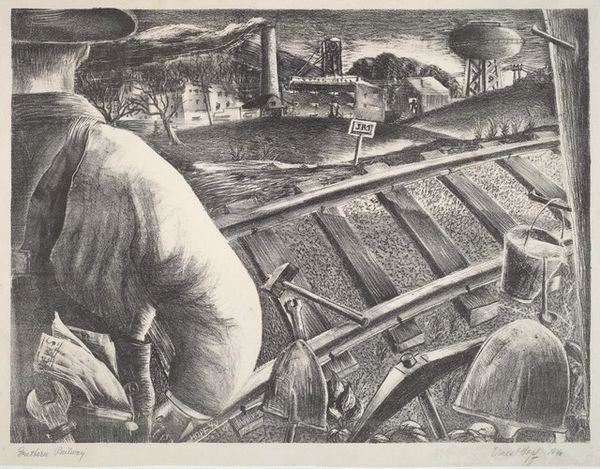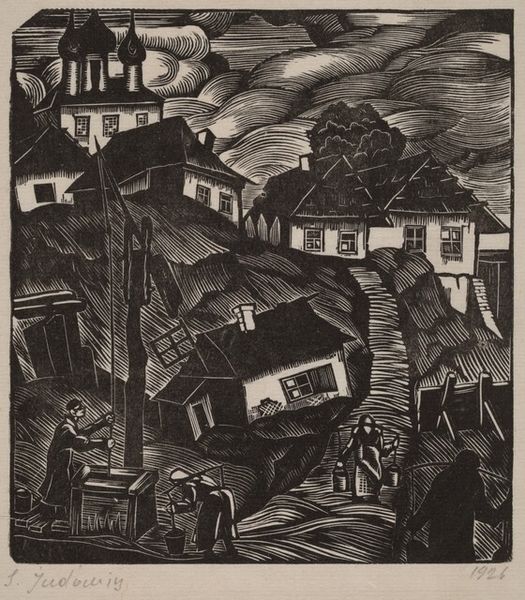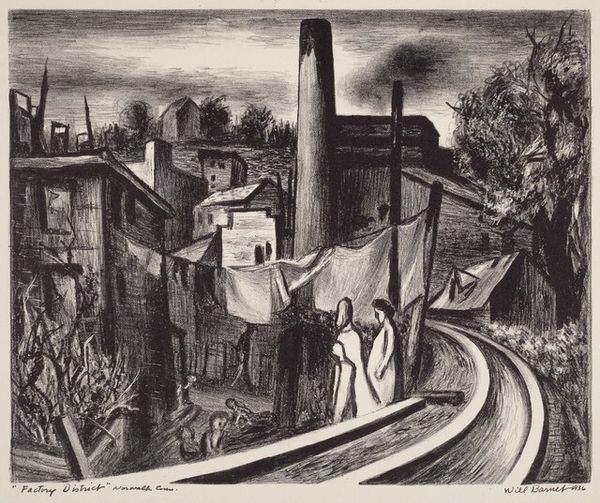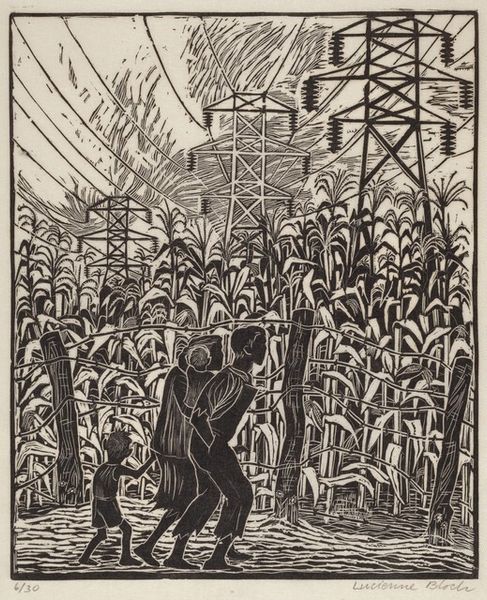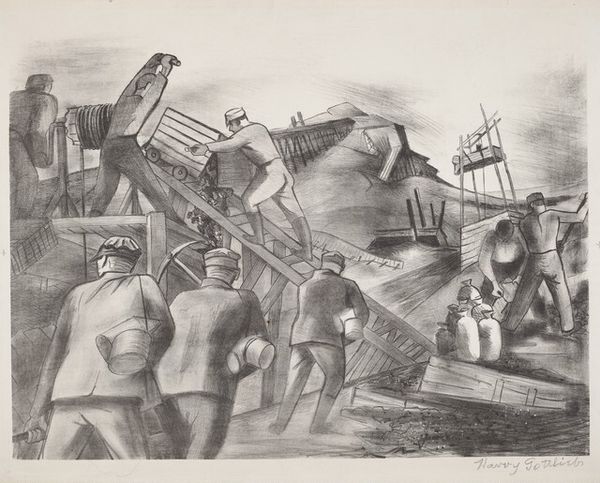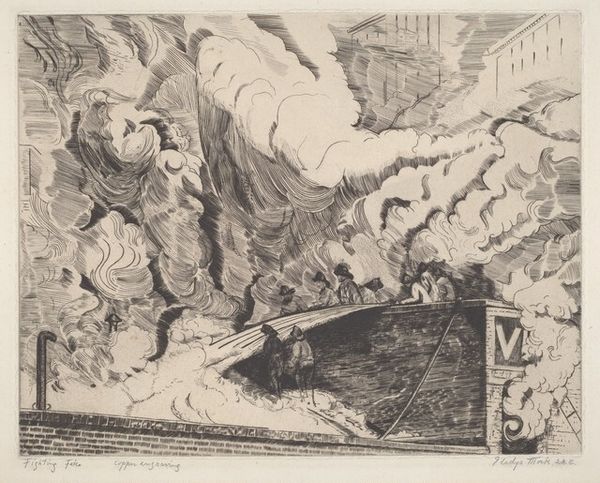
print, etching
# print
#
etching
#
social-realism
#
cityscape
#
genre-painting
#
realism
Dimensions: image: 20.8 × 28.3 cm (8 3/16 × 11 1/8 in.) sheet: 24.5 × 35.7 cm (9 5/8 × 14 1/16 in.)
Copyright: National Gallery of Art: CC0 1.0
Curator: Welcome. We’re looking at Michael Joseph Gallagher’s print, “Moving Day,” created around 1937. The etching portrays a scene of working-class life. Editor: Immediately, I’m struck by the grit. The diagonal lines practically claw their way across the plate, giving it this breathless, rushed feeling. It looks like struggle etched in ink. Curator: Absolutely. Gallagher's "Moving Day" is indicative of the Social Realism movement; it aims to depict reality, especially the harsh realities faced by the working class during the Depression. We see the steep hill, the industrial landscape...it’s about economic struggle. Editor: Right, those endless houses scaling the hill! The repetition suggests that this struggle never ends. The people pulling the cart look like they’re running up the steepest mountain of their lives, possessions spilling out, barely clinging on... Curator: The wheel about to fall off almost feels symbolic. The chaotic composition forces the viewer to confront instability and the desperate effort it takes for some just to stay afloat. Gallagher actually worked for the WPA’s Federal Art Project during the 30s, and that initiative embraced Social Realism wholeheartedly. Editor: Which tells you how much those themes were striking a nerve. I find myself looking at that figure nearest us. She has a cloth held against her chest as she hurries forward and has that determined stance that projects: We WILL prevail, even if the load nearly crushes us. There’s something so strong about this quiet woman carrying her family history. Curator: Indeed, the piece is effective as a microcosm of the collective anxieties of a community. The location itself emphasizes the societal forces acting on the figures—it speaks volumes. Editor: Thinking about it more, this image reminds me that "moving" is rarely just a physical relocation. It is charged with anxieties about the future, where home—and a secure sense of self—is still possible despite looming change. Curator: An insightful observation, and something Gallagher, and so many artists during that era, channeled expertly. Editor: It is amazing how images from that period can reflect our experiences today in 2024.
Comments
No comments
Be the first to comment and join the conversation on the ultimate creative platform.
